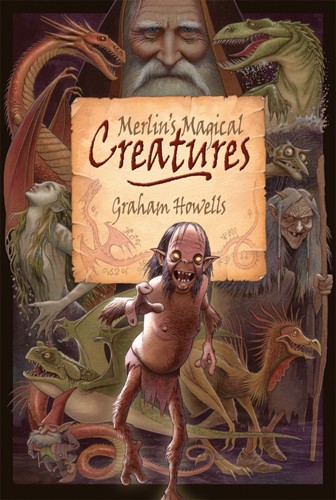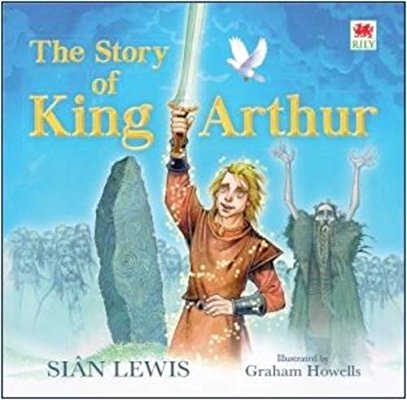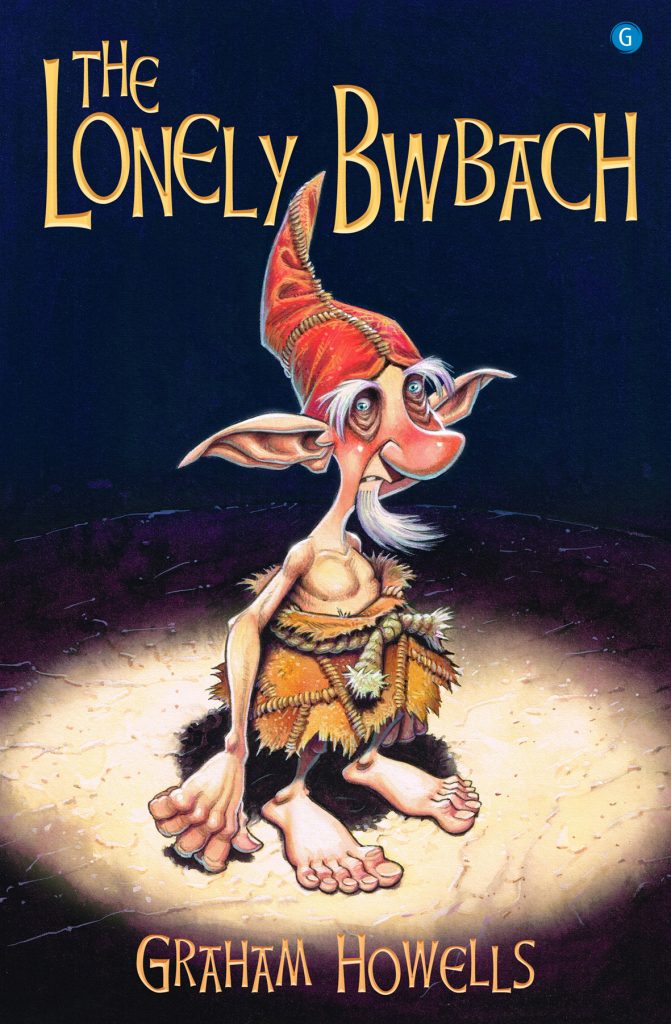Graham Howells is an author and illustrator raised in Pembroke Dock and now living in Llanelli. He works in book illustration, television, film and board games. His book Merlin’s Magical Creatures won the Tir-na-nOg Award in 2009 and he was previously shortlisted with Jenny Sullivan for Two Left Feet. His illustrations for The Story of King Arthur (Rily, 2017) by Sian Lewis are fabulously shown off in a square hardback. He is clearly drawn to themes of fantasy and magic, as seen in his latest work The Lonely Bwback (Gomer, 2018).
The Lonely Bwbach is the story of a magical house-goblin who lives in a run-down cottage in North Wales. Every Bwbach needs two things – a house to take care of and a family to look after. So what’s a poor Bwbach to do when his home is literally dismantled around him? Go after it, of course! On the way, he will meet friendly foxes, helpful hawks, and a variety of mythical beasts, the most puzzling of which: human children. Will the poor Bwbach ever find his cottage again?
We wanted to find out more about the Bwbach, so sat down with his creator, Graham Howells, to learn all about this enchanting character.
How would you describe the Lonely Bwbach?
Nothing is more important to the lonely Bwbach than carrying out his duties, and his duties involve being the most loyal, caring friend you could ever have.
You have written and illustrated the book – which came first, the images or the words?
I think the pictures came at the same time as the words. For example, the part where the Bwbach visits the school came to me as if I was watching the characters act it out in my imagination. I knew then how to describe it in words, but I could also ‘freeze-frame’ a scene from my mind, and that would become a picture in the book.
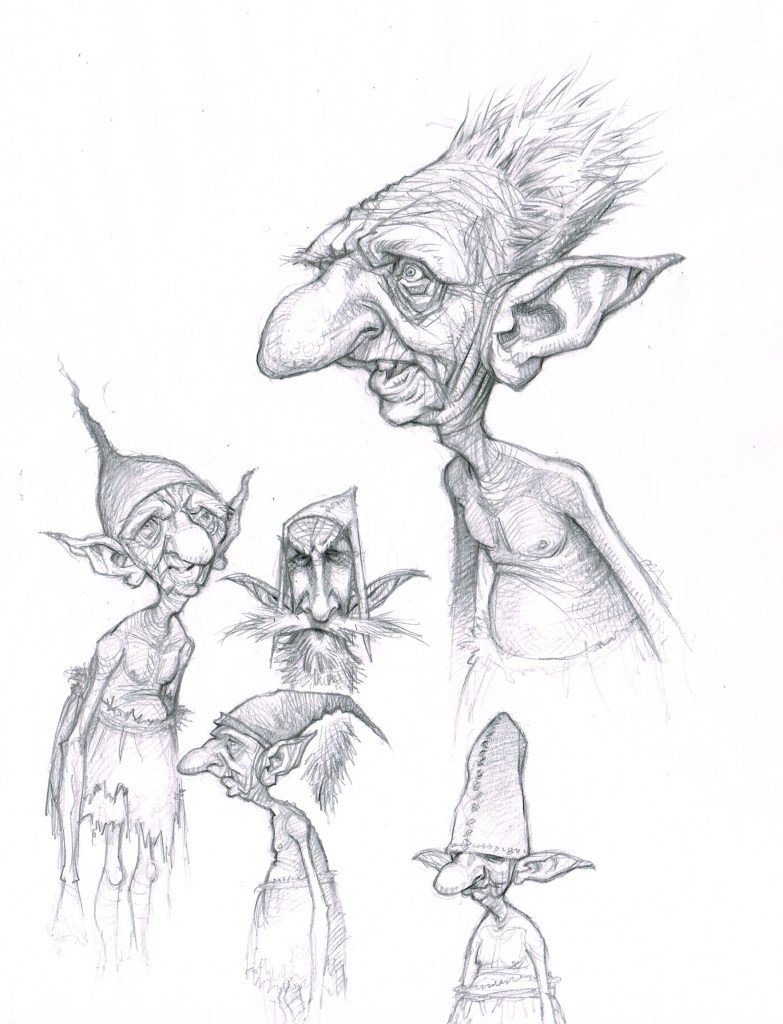
When creating illustrations, how do you start the process? Were there many versions of the Bwbach before he looked just as you wanted?
There were a few versions of the Bwbach. Before he showed me what he looked like the Bwbach showed me what a few other Bwbachs looked like first. One of the most fun parts for me is to sit quietly and see what pops into my head, waiting to be surprised.
You have written and illustrated many books featuring folklore and legends. How did your interest in this begin and what keeps you fascinated?
I have written a few books featuring folklore and legends, and I’ve illustrated even more that were written by other people.
My interest began when I was growing up in Pembrokeshire and walking in the lovely countryside. After reading The Lord Of The Rings I then found out that Wales was full of stories about wizards, heroes and magical creatures.
What keeps me fascinated is the feeling that comes when walking on the coast, or on a high hill, that the strange, magical things are still so close.
St Fagan’s National Museum of History is a central part of this magical story, did you visit when writing the book?
I’ve visited St Fagan’s many times, and it was on one particular visit that the story of the Bwbach came to me.
In one of the cottages I got talking to an attendant who said he had lived in North Wales, and he told me that when he was young boy in school one of his teachers had lived in the actual cottage we were standing in.
I can’t remember now whether he mentioned a Bwbach living in the house also, or did the Bwbach whisper it to me later?
Is there a particular house at the Museum on which the Bwbach’s home is based?
The cottage where I met the attendant was Llainfadyn cottage, so that cottage became the Bwbach’s house.
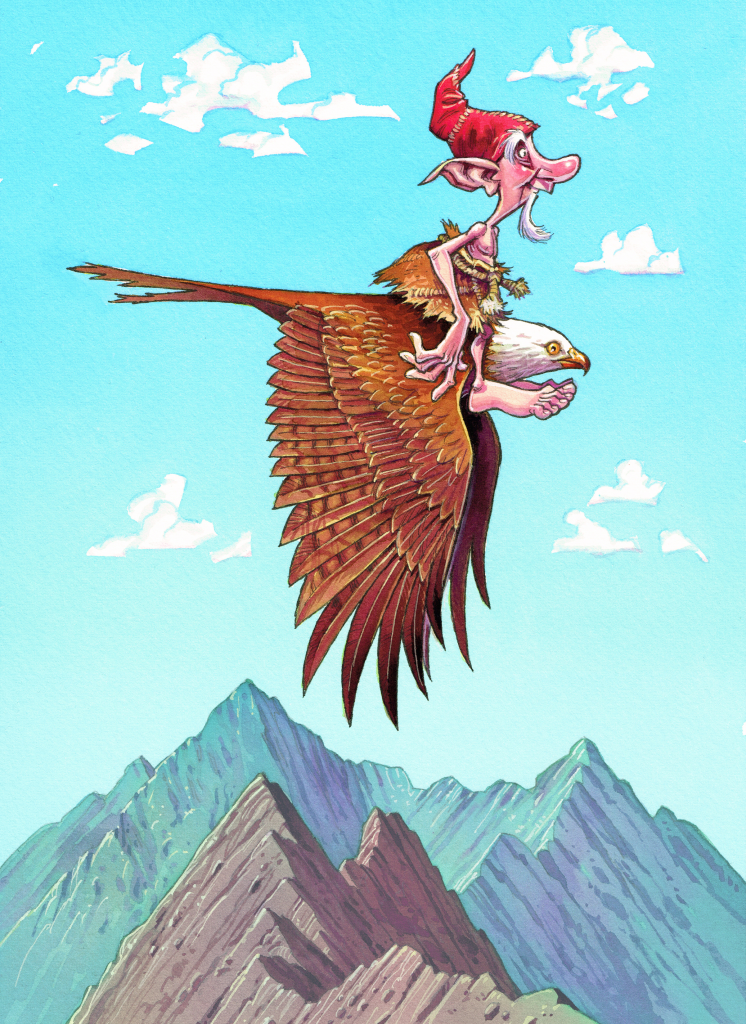
You clearly enjoy the landscape and wilderness of Wales, which is your favourite area and why?
I do have a particular attachment to Pembrokeshire, as it’s where I grew up and where I started feeling the magic that was in the countryside.
In Pembrokeshire there are standing stones, cromlechs, castles and ancient forests. There are stories everywhere of miraculous saints, dragons, knights on quests, and Fairy Folk. The land is so magical that thousands of years ago they dragged large Pembrokeshire stones hundreds of miles across Britain to build Stonehenge.
Do you find it easy to see the magical and the mythical in the everyday world? Do you think that the presence of televisions, computers and phones have meant that we have actually lost a bit of magic in life?
I think I do find it easy to see the magical and mystical in the everyday world. It just takes a little bit of imagination.
That’s why I wouldn’t blame modern technology for taking the magic away. The problem comes when we get lazy and allow the gadgets to do all the imagining for us.
Use the technology, but also go for a walk, look at the faces in tree trunks and stones, and read books that allow you to feel the magic.
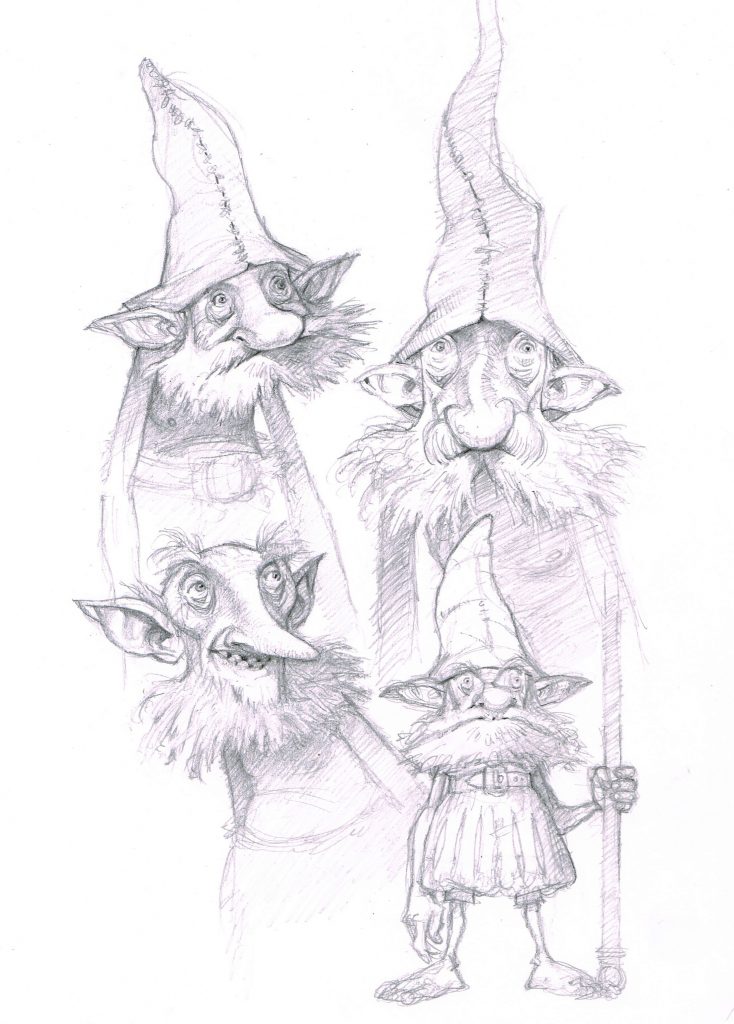
Do you have a Bwbach living in your house?
Yes, I do have a Bwbach living in the house. He puts stories and magical pictures in my head and lets me think I came up with them myself.
I wish he’d do the dishes sometimes, but he doesn’t, so I think he might be a bit lazy.
Thank you to Graham Howells for answering these questions and for sharing some of his early sketches of The Lonely Bwbach. Thanks also to Gomer for organising the q and a.
The Lonely Bwbach is available now on-line and in bookshops across Wales for £5.99.
Mae fersiwn Cymraeg, Y Bwbach Bach Unig, hefyd ar gael ar-lein ac mewn siopau llyfrau ar draws Cymru am £5.99.
